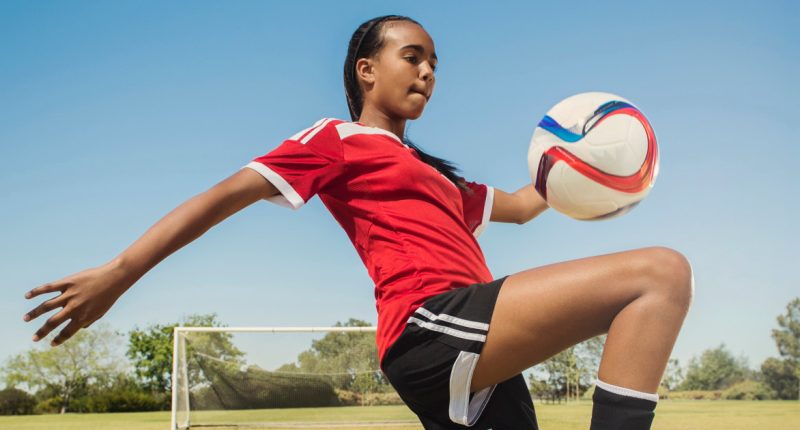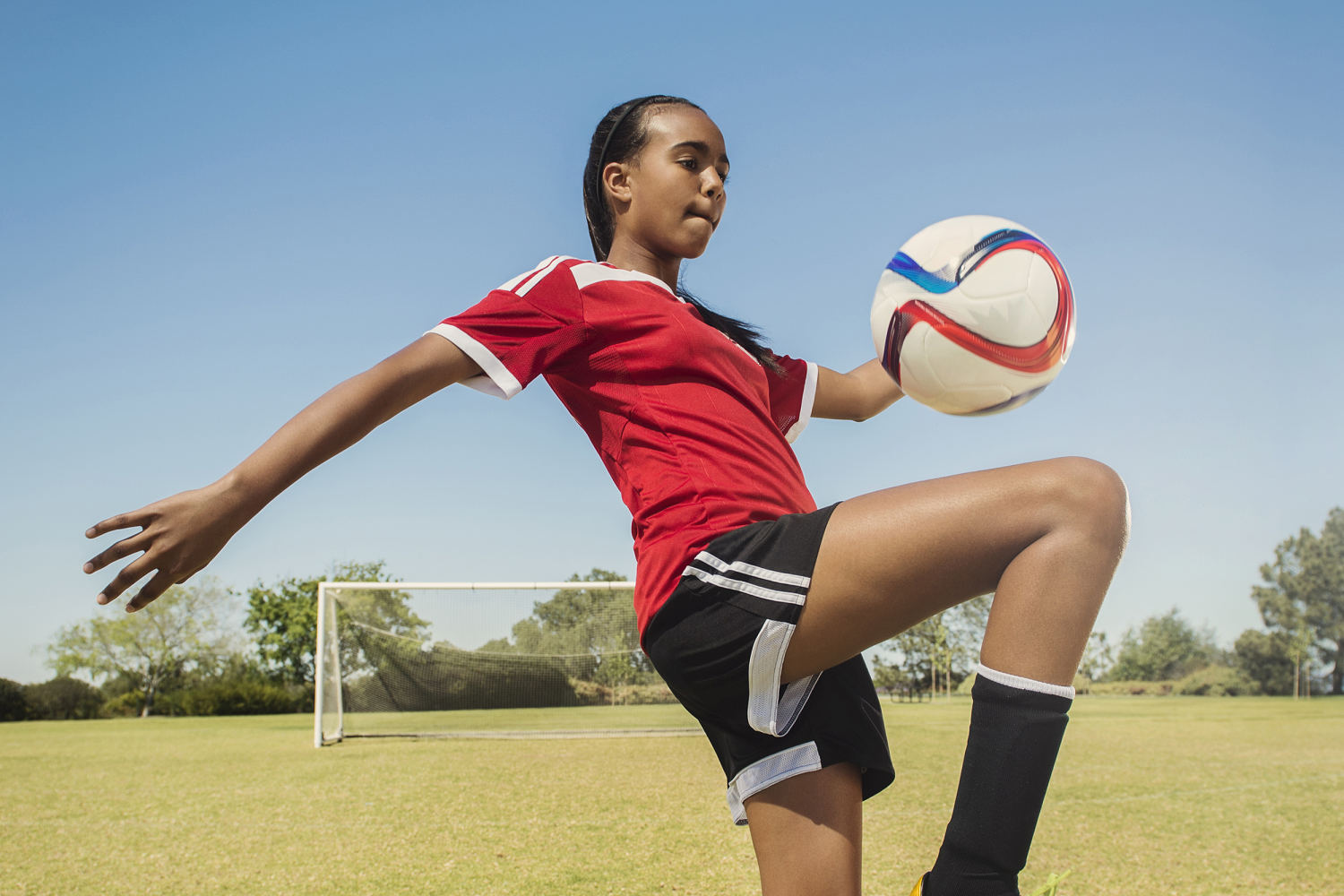
ACL tears are one of the most common and debilitating knee injuries that can hobble both professional and amateur athletes.
It’s long been thought that a torn ACL, or anterior cruciate ligament, has limited ability to heal on its own and requires surgery.
Recent research suggests that a nonsurgical treatment, including physical therapy, could be as effective, sparking controversy among surgeons who perform dozens of ACL reconstructions every year.
The study, published in June in the British Journal of Sports Medicine, found that 90% of ACL tears in 80 participants showed signs of healing on an MRI after they followed a new bracing protocol.
Many of the patients, mostly competitive or recreational athletes, also reported good knee stability and function, and were able to return to their sport a year later.
Patients wore a brace for a month that kept their knees at a 90 degree angle: a position that keeps the torn ends of the ACL closest together, increasing the likelihood they fuse, said Stephanie Filbay, lead author of the study and senior research associate with the Center for Health, Exercise and Sports Medicine at the University of Melbourne in Australia.
Over the next two months, patients underwent physical therapy as their braces were slowly adjusted to increase the range of motion. Braces were removed around the three-month mark. MRIs performed then, and again at six months, revealed that most ACLs repaired themselves.
“We have now braced over 430 patients in clinical practice, with similar high rates of ACL healing and excellent patient outcomes,” Filbay wrote in an email.
What is the ACL?
Running diagonally in the middle of the knee, the ACL helps maintain rotational stability and prevents the shinbone (tibia) from slipping in front of the thigh bone (femur).
Sharp changes in direction, quick stops or direct hits — all common movements in sports such as soccer, basketball, skiing and football — can slightly tear the ligament or snap it in two. About 100,000 to 200,000 people suffer a torn ACL each year in the United States, experts estimate.
The ACL is one of the most commonly injured ligaments in the knee, and often occurs along with damage to other parts of the knee like the meniscus, according to the American Academy of Orthopaedic Surgeons.
More about knee injuries
Surgery is almost always recommended to repair a torn ACL, which involves replacing the ligament with a new one called a graft made of tissue from a patient’s kneecap tendons or hamstrings, or from a donor.
Orthopedic surgeon Dr. Lutul Farrow, director of clinical operations for sports medicine with the Cleveland Clinic, said surgery can reliably get people back to their activities at full-function in a short amount of time with smaller risks of future injury. He wasn’t part of the new study.
Yet, surgery can have complications. Some may experience kneecap pain, chronic instability or stiffness after surgery, the AAOS says. While rare, more serious complications can include infection, blood clots and numbness.
Although the new study didn’t follow up with patients long term, researchers analyzed the results of a separate trial from 2022 including 120 ACL tears. They found that after two years, a third of injuries in people who were randomly selected to undergo physical therapy showed signs of healing on an MRI.
Why bracing instead of surgery can help healing
“This study could be a game changer,” said Dr. Lyle Micheli, an orthopedic surgeon at Boston Children’s Hospital and a professor at Harvard Medical School, who was not involved in the new research.
Keeping patients’ injured knees at 90 degrees immobilizes torn ACLs in a way that “maximizes” healing, he said, similar to stabilizing broken and fractured bones inside a cast.
The research also suggests that nonoperative treatment could be a viable option for people who don’t play professional or competitive sports or can’t get surgery because of financial or health complications, he said.
Dr. Robert Sallis, Director, Sports Medicine Fellowship at Kaiser Permanente Fontana Medical Center. He’s also the Chief Medical Officer for the Los Angeles Football Club
a family and sports medicine physician with Kaiser Permanente in California, argues that it takes several weeks for stiffness and swelling in the injured knee to subside before patients can safely undergo surgery anyway — so the idea of waiting and bracing doesn’t hurt, he said.
“ACL surgery has a big role in managing ACL tears, but too often the nonoperative treatment is ignored,” he said.
Does knee surgery help arthritis?
Dr. Maryam Saidy, a 40-year-old colorectal surgeon with Kaiser Permanente in California, wasn’t offered an alternative to surgery when she tore her ACL in 2008 during a recreational basketball game. The operation left her with scar tissue that prevented the full range of motion, early arthritis and a permanent limp.
It took two years of physical therapy before she could play basketball again.
About a decade later, Saidy tore the same ACL again in January. This time, two surgeons suggested physical therapy as treatment. In three months, she was back on the court.
“It was a lot easier,” the second time around, she said. “I’m perfectly happy with how life is right now with my knee.”
More than half of the people who tear their ACLs develop osteoarthritis — when cartilage within a joint breaks down and causes pain, stiffness and swelling.
ACL reconstruction has long been thought to reduce risks of developing the condition, but more recent research shows that about 50% of patients who have surgery still develop it within 12 to 14 years.
“Reconstruction doesn’t save you from that fate,” Sallis said. “If you don’t have to have surgery, shouldn’t you consider other options, especially if the outcome is the same?”
How surgery may help prevent future injury
While some experts agree that not all torn ACLs require surgery, others aren’t convinced that bracing injured knees will lead to the long-term stability needed to prevent further injury.
Cleveland Clinic’s Farrow said keeping the knee in a limited position for months can be inconvenient for daily activities such as going to school or work.
It takes about a year, on average, to safely return to sports after tearing the ACL, regardless if the person got surgery or not, experts say.
Farrow questioned how stable a torn ACL that healed on its own would be, compared to a reconstructed one.
An unstable knee could contribute to a potential tear of the meniscus — the shock-absorbing cushion of cartilage in the knee — which increases risks of osteoarthritis. ACL reconstruction can protect the meniscus from injury, doctors say.
A weak knee can also lead to another ACL tear. In fact, 11 patients (14%) in the new study re-injured their ACL.
However, Filbay said, she’s working with more than 60 people who have had surgery on one knee and completed the bracing protocol on the other.
Most of these patients, she said, felt that recovery after bracing “was faster, return to sport was easier, and their knee felt better” compared to recovery post surgery.
Still, some experts think the risks are not worth the benefits.
“If a collegiate athlete has a complete tear and you send them back to sports without a surgery, it’s close to malpractice,” Farrow said.
Dr. Riley Williams, head team orthopedic surgeon for the Brooklyn Nets who also works with the Hospital for Special Surgery in New York, said people may not know how well the treatment worked until they return to the sport.
“If it didn’t, then that would have a catastrophic effect on the function,” he said.
Source: | This article originally belongs to Nbcnews.com










